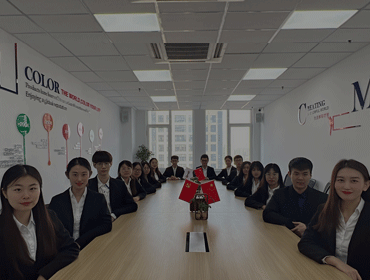Direct Dye
(1) Definition: Direct dyes are dyes that can be heated and boiled in neutral and weak alkaline media without the help of mordants, that is, dyes that can be dyed. Direct dyes rely on hydrogen bonds between direct dyes and cotton fibers and van der Waals It is mainly used in fiber, silk, cotton spinning, leather and other industries, as well as in papermaking and other industries.
(2) Features: Direct dyes have water-soluble groups such as sulfonic acid group (-SO3H) or carboxyl group (-COOH) arranged in a linear molecular structure. The aromatic ring structure is in the same plane, so the direct dye has a greater affinity for cellulose fibers, and it can be dyed directly in a neutral medium as long as the dye is dissolved in dry water.
Direct dyes are more direct to cellulose fibers than other dyes. This is mainly due to the large molecular weight of direct dyes, linear molecular structure, good symmetry, long conjugated system, good coplanarity, and large van der Waals forces between dyes and fiber molecules. At the same time, the direct dye molecules contain groups such as amino groups, hydroxyl groups and azo groups, which can form hydrogen bonds with hydroxyl groups in cellulose fibers, hydroxyl groups and amino groups in protein fibers, etc., which further improves the directness of dyes.
(3) Dyeing mechanism: When direct dyes are used to dye cellulose fibers, salts play a role in promoting dyeing. The dye-promoting mechanism is that the direct dye dissociates into pigment anions in the solution and dyes the cellulose fiber. The cellulose fiber is also negatively charged in water, and there is a charge repulsion between the dye and the fiber. Adding salt to the dye solution can reduce the charge. Repulsion, improve the dyeing rate and dyeing percentage. Different direct dye salts have different accelerants. For direct dyes containing more sulfonic acid groups in the molecule, the salt has a significant effect of promoting dyeing. When promoting dyeing, the salt should be added in batches to ensure uniform dyeing of the dye. Direct dyes with a low dyeing percentage need to add more salt, and the specific amount can be determined according to the type of dye and the depth of dyeing. For light-colored products with high level dyeing requirements, the amount of salt should be appropriately reduced to avoid uneven dyeing locally and dyeing defects such as colored flowers.
(4) Dyeing temperature: The temperature at which the highest dyeing percentage is obtained during the conventional dyeing time is called the highest dyeing temperature. According to the difference of the highest dyeing temperature, direct dyes are often divided into low temperature dyes with the highest dyeing temperature below 70 ℃, medium temperature dyes with the highest dyeing temperature of 70-80 ℃ and dyes with the highest dyeing temperature of 90-100 ℃. High temperature dyes. In production practice, cotton and viscose fiber knitted fabrics are usually dyed at around 95 °C, and the dyeing temperature of silk knitted fabrics is lower, because too high temperature damages the fiber luster, and the optimal dyeing temperature is 60 to 90 °C. Properly reducing the dyeing temperature and prolonging the dyeing time is beneficial to production.




